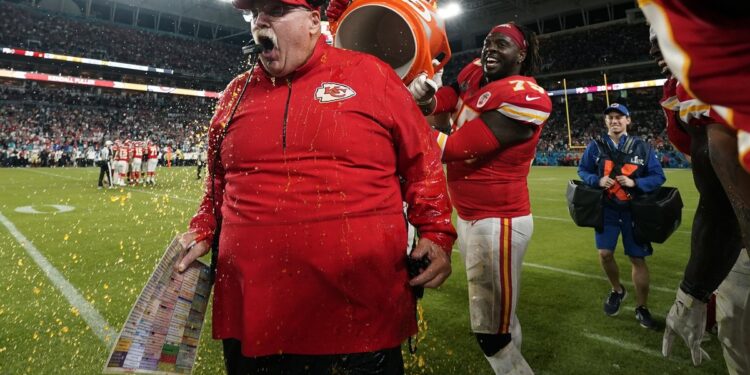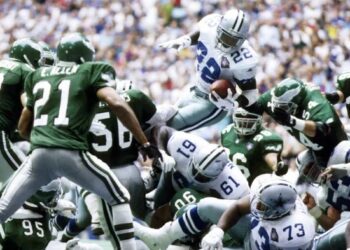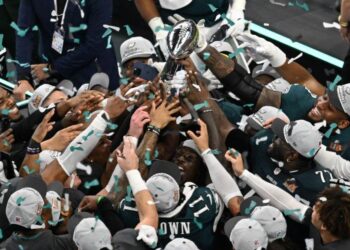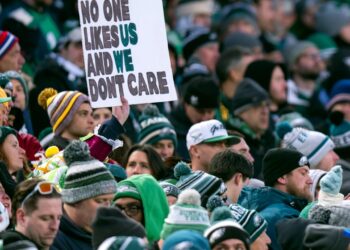By Bill Carroll
What do offensive coordinators, second year ROTC cadets and 1990’s rappers all have in common? They all learned the same quotes from The Art of War: “All warfare is based on deception. Hence, when we are able to attack, we must seem unable; when using our forces, we must appear inactive; when we are near, we must make the enemy believe we are far away; when far away, we must make him believe we are near.” ―Sun Tzu, The Art of War
In Super Bowl LVII there will be two teams with many strengths and very few weaknesses, taking the field. The decisions and positions that prove decisive will be vital to identify, for both sides.

Sun Tzu (孫子Sūn Zǐ; Circa 6th century BCE) was a Chinese general, military strategist, and philosopher who lived in the Eastern Zhou period of ancient China. The Art of War is a systematic guide to strategy and tactics for rulers, written as Sun Tzu served the state of Wu, approaching the end of the Spring and Autumn Period (770–476 BCE)
Sun Tzu is traditionally considered the author of The Art of War, but the work is more likely to have been written early in the Warring States period (475–221 BCE), at this time China was divided into six or seven states that often warred with each other.
Andrew Walter “Andy” Reid Is a 20th and 21st century football player, assistant coach, head coach and executive of American tackle football. He grew up in the Los Feliz neighborhood of Los Angeles, just south of Griffith Park and east of Hollywood. Due to its proximity to the movie studios, Los Feliz was home to many of the film industry’s working class. Andy Reid’s father, Walter, was a scenic artist who made backgrounds and props for film, TV, and stage productions.
The family lived on Holly Knoll Drive, down the street from John Marshall High School, where some of the scenes in the movie Grease were shot. Andy Reid, in his pre-teens and early teen years, spent hours, at the high school, around the football field, working as the team’s water boy. One day Andy Reid was on the field when Mike Haynes, the future Hall of Fame corner-back, attending Marshall High at the time, asked him: Why aren’t you suited up?
“Because I’m 12 years old”, Reid replied.
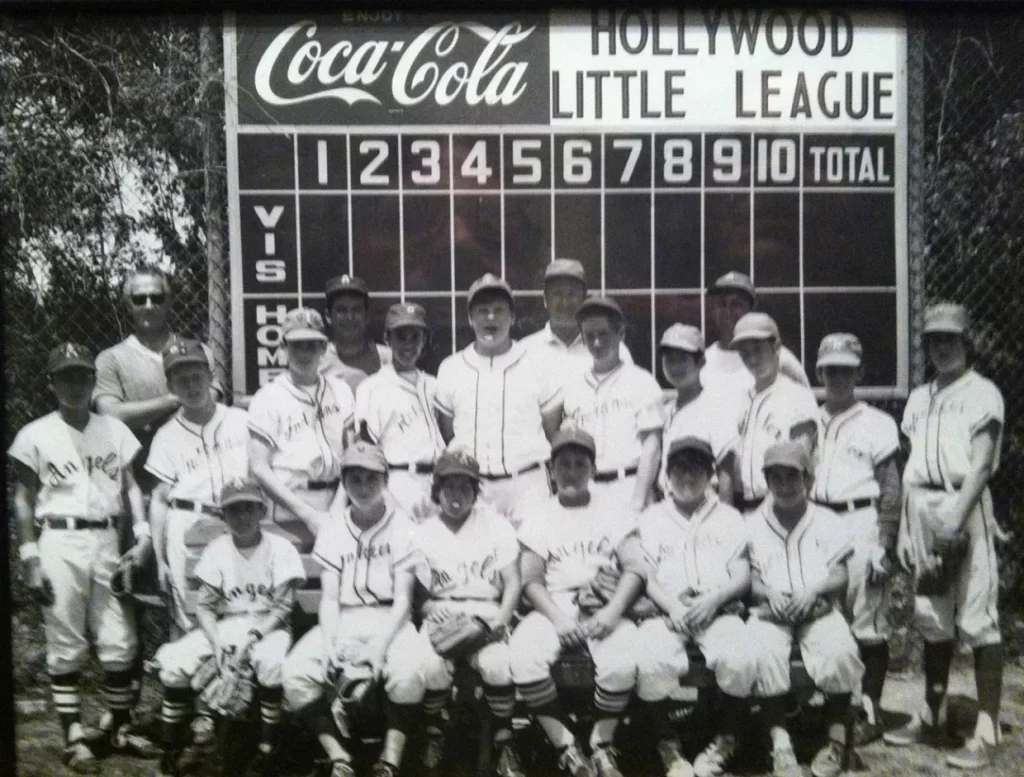
Andy Reid’s Hollywood Little League team photo, circa 1970. The 12-year-old Reid is in the middle of the back row, in the adult-sized jersey.
Size handed Andy Reid a tremendous advantage in sports. When Andy Reid played Little League baseball, he was a catcher, and Andy Reid was the largest member of a group of kids in the Los Feliz area, who were all about the same age and loved sports. Bobby Volkel, the quarterback, lived across the street. Ted Pallas, who lived around the corner, and his buddy Tony Stewart, were both pretty good baseball players.
At the Lemon Grove Rec Center, he played catcher in baseball and some of Andy Reid’s feats are described in hushed tones, as if describing Josh Gibson or Johnny Bench. Reportedly, Andy Reid once hit a ball over the 20-foot wall beyond center-field and onto The Hollywood Freeway. But Andy Reid’s favorite sport was football.
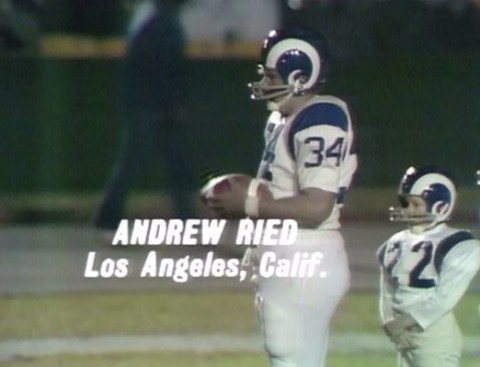
Andy Reid first came to national prominence as 13-year old during a broadcast of Monday Night Football. December 13, 1971, during halftime of a Rams-Washington game Andy Reid was a participant in the Punt, Pass, and Kick competition. Warming up prior to competing, Reid played catch with, Sonny Jurgensen, Washington’s starting quarterback. Both Jurgensen and Reid had red hair, which caused a teammate to call out: Hey, Sonny is that your little brother? In reality, Reid actually dwarfed the Hall of Famer. Jurgensen was listed at 5′ 11″, 202 pounds.
The jersey he’s wearing that day, was from the Rams locker room. In fact it was taken from the locker of Les Josephson, Rams’ starting running back, who was listed at 6′ 1″, 207 pounds. At his age, not only was Andy Reid dramatically larger than all of the other Punt, Pass and Kick competitors, but he was, “according to Ken Gerard, one of Reid’s physical education teachers at Thomas Starr King Junior High School, Andy Reid was, by that time, 6’2″ and weighed 220 pounds.” Not surprisingly he was Thomas Starr King Junior High, Athlete of the Year. Quotes: Courtesy Tony Stewart in Sports Illustrated.
As a 9th grader Reid attended John Marshall high school, he played offensive and defensive lines, also serving as his team’s placekicker. He famously won three games on last-minute kicks. After high school Andy Reid had planned to go to Stanford, however a knee injury diverted him to a junior college in Glendale. Andy Reid played offensive tackle at Glendale Community College.
In two seasons at Glendale, Andy Reid played guard, tackle, and kicker. He was named to the all-conference second-team in 1977. That season, the Glendale Vaqueros advanced to the Mission Bowl for their first bowl appearance in 14 seasons. Andy Reid was named to the Glendale Junior College Hall of Fame in 2003.
After Glendale, Andy Reid attended BYU and played a bit of offensive guard. Andy Reid graduated in 1981, during the years that he was there, Norm Chow, Mike Holmgren, and most importantly Doug Scovil were on staff. Scovil had come to BYU from the San Francisco 49ers, the previous spring. In Scovil’s four seasons as offensive coordinator, with Head Coach LaVell Edwards, at Brigham Young, the Cougars shattered many, NCAA passing, scoring and total-offense records. Also he began putting his stamp on QBs, almost as soon as his coaching career started at the College of San Mateo, in 1958.
While there, Doug Scovil won three conference titles. Also, Scovil was earning a reputation as a developer of quarterbacks, including All-American Rick Norman in 1962 and Neal Dahlen in 1959, a future winner of seven super Bowl Rings as a coach and administrator with San Francisco and Denver, (including General Manager of the Broncos).
At Navy, Scovil inherited QB Roger Staubach, who had transferred to the Academy, a year earlier, from New Mexico Military JC. Staubach became a late-season starter in 1962, spearheading Navy’s 34-14 upset of Army. In attendance. was, then President John F. Kennedy, a former Naval officer.
After Scovil was with Roger Staubach, at the Naval Academy, for four years, he was named backfield coach of the San Francisco 49ers, while John Brodie was a 49er. Scovil coached Bob Lee at the University of the Pacific, as well as Gifford Nielsen, Marc Wilson and Jim McMahon at Brigham Young. in 1980 McMahon became the first player in NCAA history to pass for more than 4,000 yards, with 4,571, 47 touchdown passes, and led the NCAA in passing efficiency with 176.9.
In 1986, his first season with the Eagles, Scovil was largely responsible for the development of Randall Cunningham, then a second-year player. Scovil made improvements, including, correcting a hitch in Cunningham’s delivery; also he was instrumental in overseeing Cunningham’s growth from a third-down specialist to starting QB.
Tragically, late in the 1989 season, Scovil died of a heart attack, at Veteran’s Stadium, derailing an Eagles’ team with a shot at the Super Bowl. Scovil’s loss, I firmly believe, stunted Cunningham’s further development, until he came out of retirement with the Vikings, where he was coached by Dennis Green, a former assistant to Bill Walsh and Brian Billick, who had been, under Doug Scovil, the tight ends coach and recruiting coordinator, for five seasons (1981–1985) at San Diego State.
Scovil’s influence was and is, still palpable in football today.
Andy Reid/Sun Tzu-The Journey of Enlightenment
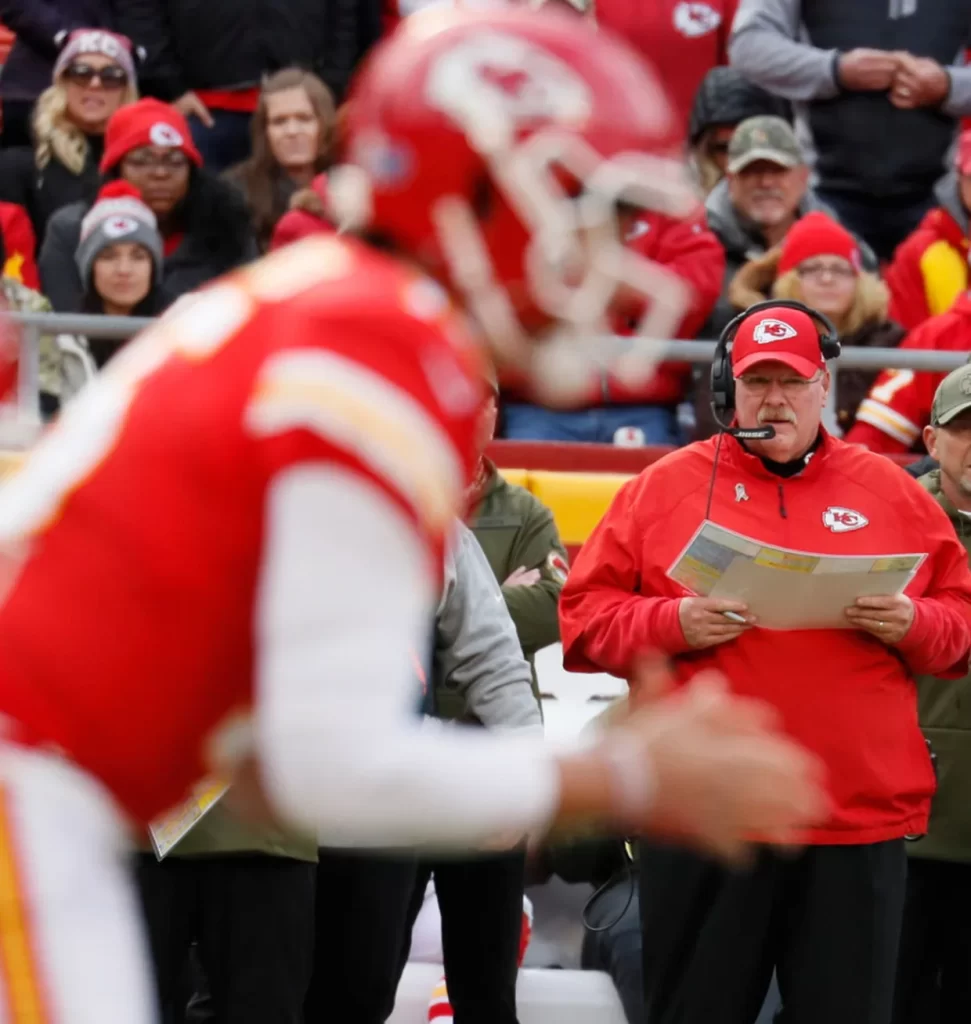
What allows a man born on Wednesday, March 19, 1958 in Los Angeles, California., to remain a member of the Avant Garde? A man whose offensive influence is great enough that, when the Philadelphia Eagles beat the New England Patriots, in Super Bowl LII, 41-33, in a game that, then Oklahoma coach, Lincoln Riley said, looked like a Big 12 game, Andy Reid’s offensive tactics, embodied in his former assistant Doug Peterson, were decisive. The game served as a kind of proof of concept.
Pro Football Focus has a play-by-play coaching metric that determines the most valuable play-callers in the sport, As of last December, Reid was on top for the past three years and has ranked in the top 10 in every year since 2014.
But the seeds of, then Eagles’ head coach, Doug Peterson’s, victory were embedded in a previous defeat. The Eagles were playing the Patriots in Super Bowl XXXIX. Philadelphia’s offensive staff spent the two previous weeks preparing to pass-protect against New England’s 3–4 front.
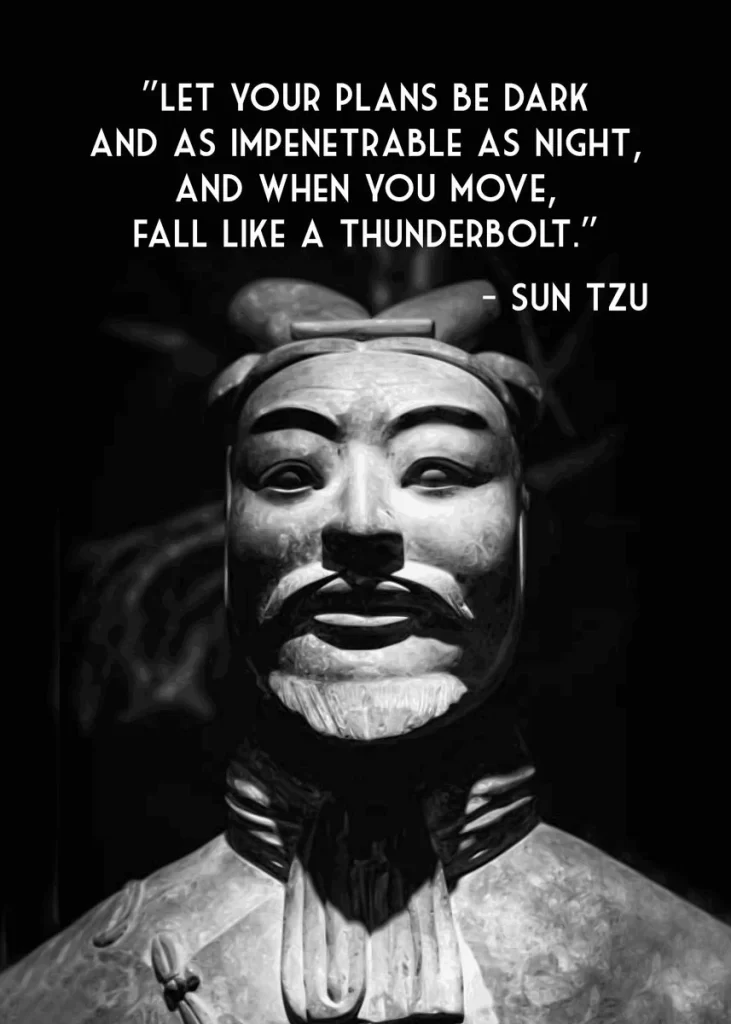
Bill Belichick, who likely is conversant in Sun Tzu as well, had New England play with four down-linemen. Two defensive players filled the A gaps and Andy Reid’s QB, Donovan McNabb, was vulnerable to their interior pressure, as nearly all of his snaps were under center.
Andy Reid/Sun Tzu: Death And Rebirth
During his fourteen years as the the Eagles head coach, they were among the most successful franchises in the league. The Eagles had nine playoff appearances, multiple NFC championship games, and a Super Bowl berth. Between 1999 and 2012, only the New England Patriots and Indianapolis Colts had more playoff appearances than the Eagles.
Andy Reid keeps, playing his small role in, nurturing much of the offensive innovation of the past two decades. He hired ‘Pistol Offense’ sire and former Nevada coach Chris Ault as a consultant to teach him the offense in 2013. Soon after, the Chiefs ran the Pistol with Alex Smith, and the 49ers reconnected the Pistol with, former Nevada and Ault QB, Colin Kaepernick.
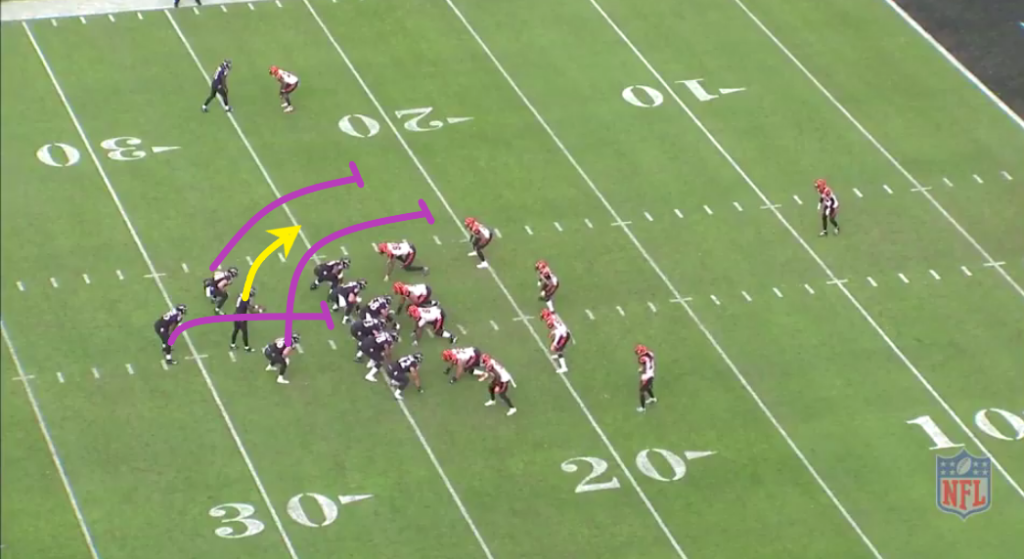
Six years later, the Ravens, with former 49ers coordinator, Greg Roman designing their offense, deployed the Pistol with Lamar Jackson. The offense helped make him an MVP. Reid seems to be peering into the future. At times, a bit too far. Former Eagles’ executive Joe Banner, said when they signed Michael Vick in 2009, Reid planned to run the spread. While they didn’t install a full version of spread. Reid helped Vick to become a MVP candidate.
Despite a run of unprecedented success, after a 4-12 finish in 2012, Andy Reid was fired as both Eagles’ head coach and Executive Vice President of Football Operations. Andy Reid, in his 14-years with the Eagles, produced the best win total, 120, winning percentage at .609 and playoff victory total, 10, in team history.
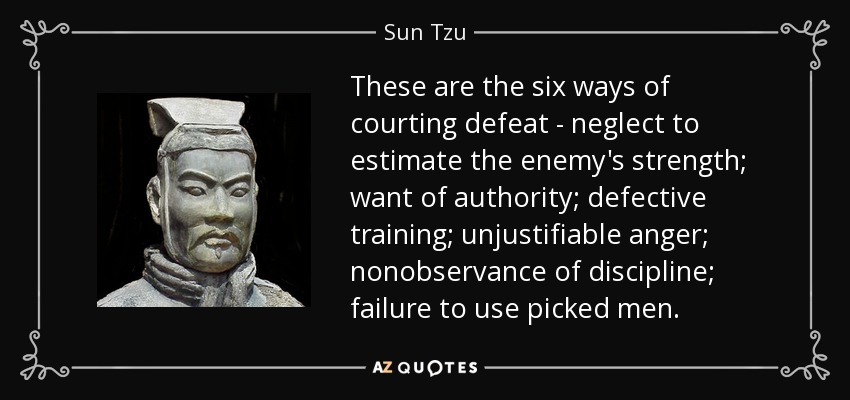
Once in Kansas City, it was immediately clear that they had hired the right coach, as well as the right man. Out of the gate at full gallop, Kansas City built a 9–0 record, to start the season, tied for the best start in franchise history.
To many observers it would seem that the offense that Andy Reid had installed with the Chiefs, was very similar, if not identical, to his previous one with the Eagles. But Andy Reid was always looking both forward and back, seeking the most minute of edges.
The West Coast offense has been the rock-solid foundation of Andy Reid’s offense since the beginning of his NFL coaching career, as an assistant, with Mike Holmgren’s Packers, in the early 1990s. Andy Reid had his offensive stratagems begin to transform, during QB transitions, from McNabb to Michael Vick, the most talented dual-threat QB of that time.
Andy Reid experimented with the possibilities of adding to that West Coast foundation, the spread concepts he was seeing all over, in high school and college football, adding more motions and shifts, more formations and even more stretching the field horizontally, creating more chances to stress a defense.
Putting The ‘Dagger” In Cloak And Dagger
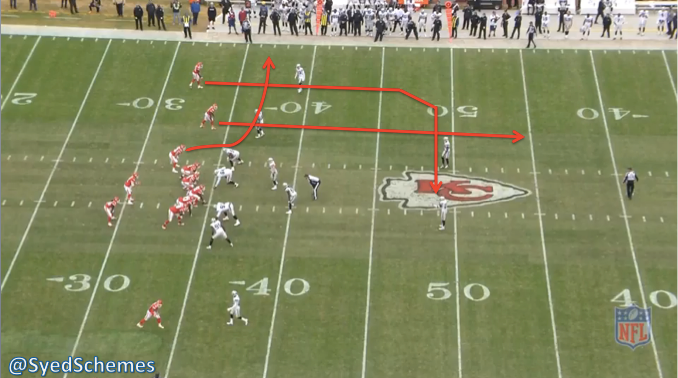
‘Dagger’ is a three route combination consisting of a vertical route from the slot receiver, a drag from the weak side, for a horizontal stretch, and a 15 yard deep ‘Dig’ route or square-in from the primary receiver. Normally the quarterback would read read this Y to Z to X. The main challenge is that Dagger Concept is a long developing concept, attacking the middle of the field. Several adjustments can be made, within the concept, to attack multiple types of coverage and it’s able to be run under center, from both ‘Pistol’ and ‘Shotgun’ and is potentially devastating to both man and zone coverage.
Play-action can help to buy, or at least rent, time for the QB. In ’21’ personnel, two running backs, a tight end and two receivers, a back can stay in for protection, while the tight end takes the ‘Dig’, [a route Travis Kelce runs as well as any tight end in history], the back running the ‘Drag’ can be tagged to convert that route to a ‘Wheel’ route, by a call made, or even a simple gesture. That adjustment is known as “tagging” a route.
The concept is predicated on the slot receiver drawing the attention of the safety, thereby having the ‘Dig’ work behind, in the space created. But when the defense reacts, either by having the safety stay lower to take away the ‘Dig’ or if the defense employs a “Robber”, meaning that while one safety drops to the deep middle, the other “robs” the hole over the intermediate middle, where Dig routes, deep crossing routes and most post routes are aimed.
In some cases, a corner and safety can invert, meaning they trade responsibilities. If a secondary can communicate and move at a very high level it makes it harder to anticipate who the “Robber” may be. If the middle of the field is open, as against Cover-2.

Vertical route stems are carried to 12-plus yards, providing the possible threat of a vertical route to the back end defenders, so those defenders have to respect the chance of a deep ball.
Greg Lewis, a former wide receiver, is the only person to both play and coach under Reid in separate Super Bowl appearances. Greg Lewis caught a touchdown pass when Andy Reid’s Eagles lost in 2005, to the New England Patriots, in Super Bowl XXXIX, in Jacksonville. Lewis then coached the Kansas City Chiefs’ wide receivers in the Eagle’s Super Bowl LIV win over the San Francisco 49ers.
Just one month after the Chiefs hired Andy Reid, a trade was made for 49ers quarterback Alex Smith. Andy Reid had been taken with Smith’s college tape at Utah. Smith had run Urban Meyer’s spread-option offense, including the zone-read plays that presaged run-pass options (or RPOs). Matt Nagy remembers walking into Andy Reid’s office, Monday mornings, as the whiteboard filled with ideas, inspiring the nickname “A Beautiful Mind.”
Lewis has been through the majority of the ups and downs of the head-coaching career of Andy Reid. A relationship between the men, started when Lewis signed with the Eagles, in 2003. Lewis thinks Reid’s style did evolve, but is, at it’s root, quite like when they first met in Philadelphia, two decades ago.
“Honestly, it hasn’t changed, from (2003) to now,” Lewis said
“He studies like no other coach I’ve ever been around,” Chiefs receivers coach Greg Lewis said. “He studies college games, high school games, CFL games, European games. He’ll go look at stuff from 1910. He knows everything. He has a beautiful mind. He is able to compartmentalize everything then bring it out at the right moment, ‘Oh, this is something I saw on film from 70 years ago.’” Then comes the most important part: “He’s able to put it in terms everyone understands, and that’s special.”
“Some of the stuff we were doing in 2003 or 2004, we still have, we’ve blended it with the college stuff. He is so open to adapting and adjusting the nuances of the offense. Explained Lewis, “He has never been stuck on what he did before.”
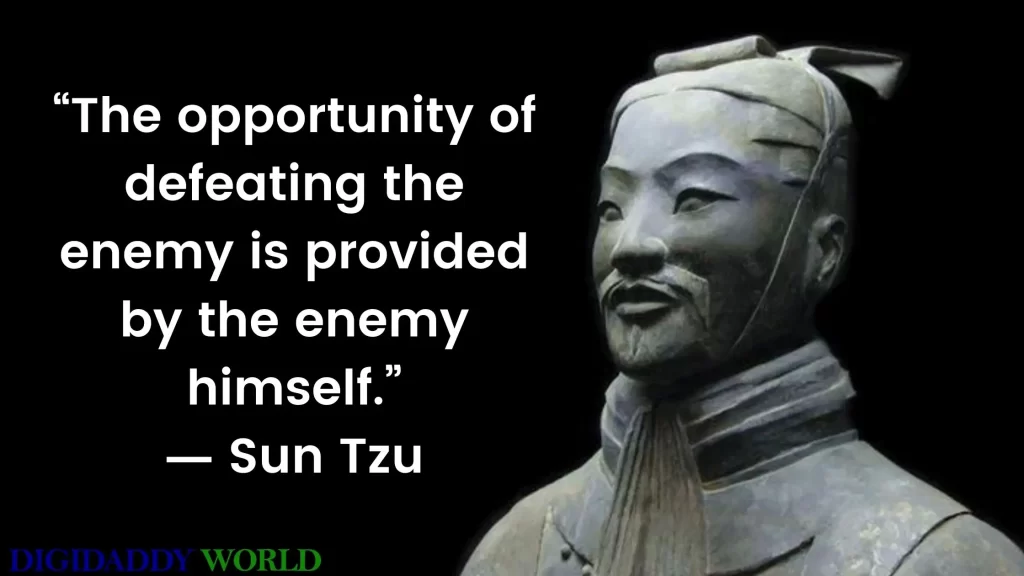
Perhaps an ideal glimpse inside the “Beautiful Mind” is the key third-and-15, midway through the fourth quarter of Super Bowl LIV. The Chiefs lined up the same way they had when they had attempted Jet Chip Wasp, in the first half. Watkins ran the same route he had previously. Kelce and Hill made it look like they were, also running their routes the same way. Only this time, as both went into their breaks, and the defense recognized what was coming, things changed, as Mike Kafka illustrated by hand (below).
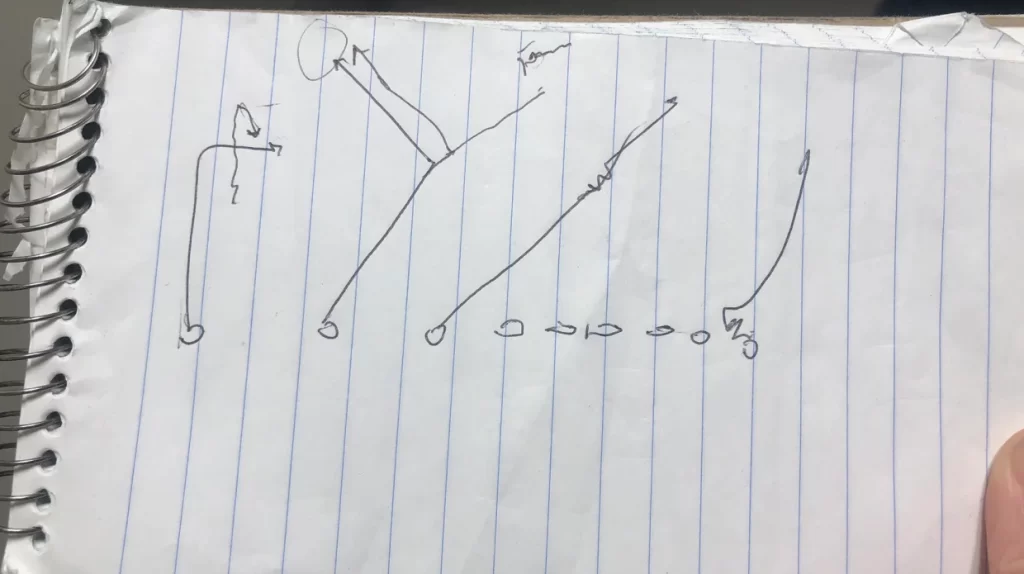
Kelce, rather than settling down in the soft spot in the 49ers zone, instead stutter-stepped, then burst across the middle. Hill took two steps inside, his route stem suggesting a post route, then broke outside. Hill runs a ‘Wasp’ route, initially he begins running a deep crossing route, taking defenders towards the middle of the field, then he cuts sharply to the sideline. The 49ers’ aggressive form of Cover-3 match-up zone, had shut down an early attempt at a similar shot play earlier. That same aggressiveness proves to be their undoing.
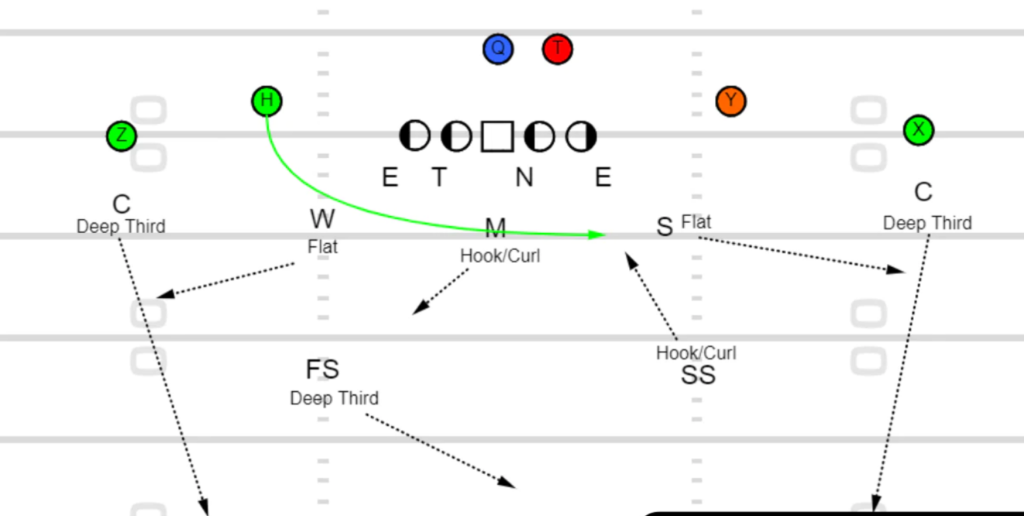
Corner-back Emmanuel Moseley has the deep, outside third responsibility, where Hill is cutting, but he drives toward Watkins losing track of Hill. Safety Jimmie Ward has the deep, middle third, but drives in, anticipating a crossing route, Hill is now wide open to the sideline. Mahomes had DeForest Buckner collapsing his pocket, so he drops 14 yards behind the line of scrimmage, releasing the ball without setting his feet.
Still he gets enough on it to hit Hill, in stride, the ball traveled over 57 yards, 44 yards were gained. The drive continued. The Chiefs would score on three consecutive possessions and win 31-20.
Perhaps no such heroics will be necessary for the Chiefs to overcome another elite defense, this time, in the form of Gang Green from Philadelphia. But if a play, or a passing concept that is truly a form of deception is needed.
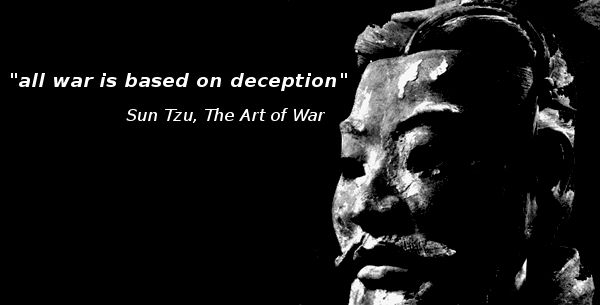


 NFL
NFL